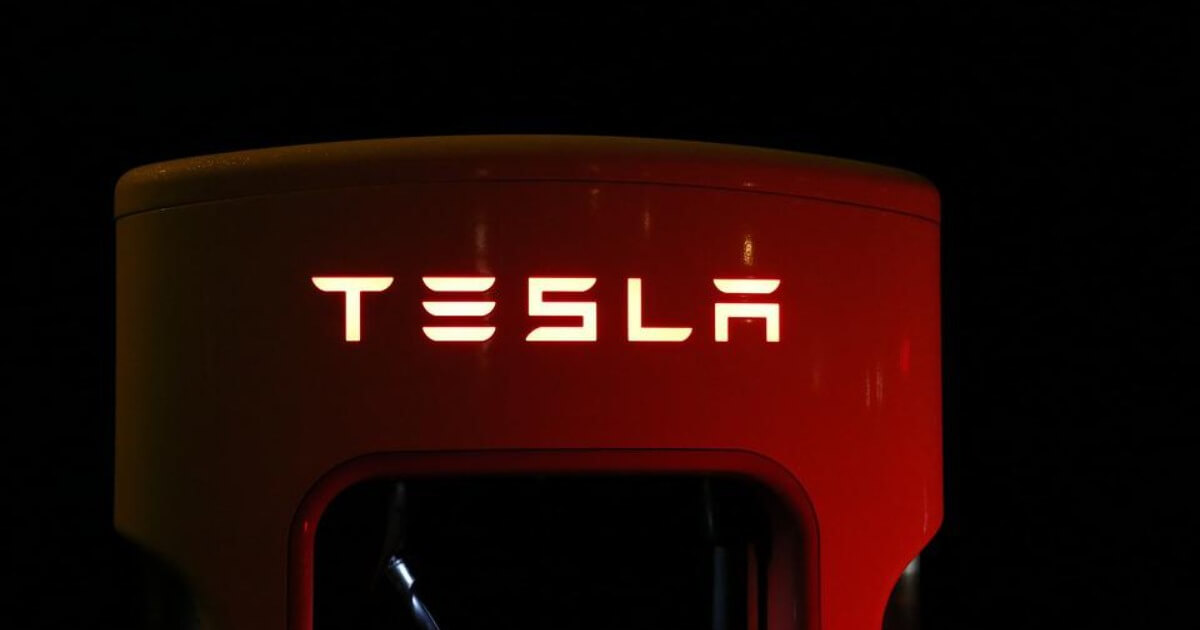We Can Love Electric Cars, But Let’s Not Spurn Biofuels
Right now, electric cars have the momentum and the “inevitability” narrative on their side. Is the idea of pursuing two paths forward a waste of money?
July 16, 2021

The Biden administration, the European Union, China and General Motors want to make battery-powered electric cars the champion of motorists worldwide.
At the same time, U.S. and European agricultural interests and investors are pouring serious money into biofuels that go into cars and trucks running on liquid fuels.
The billion-dollar question is whether they can both be right about the future of transportation. The answer may not be as simple as it seems.
The EV moment
Right now, electric cars clearly have the momentum and the “inevitability” narrative on their side. The Biden administration’s ambitious infrastructure proposal sets aside $174 billion to subsidize electric cars, but little for biofuels.
As Bloomberg News has reported, Europe is taking unprecedented steps to phase out gasoline and diesel cars and “bring an end to the almost 150-year-long era of the internal combustion engine.”
The United Kingdom has imposed a 2030 ban on the sale of cars lacking a plug, and Germany has extended for four years its subsidies for electric vehicles. China plans to produce 8 million of the vehicles by 2028.
Biofuels: A legacy of controversy
The biofuels cause isn’t helped by a legacy of controversy and environmental opposition.
This dates back to early concerns about the value of agricultural fuels in abating greenhouse gases, as well as worries about their impact on food prices and fragile ecosystems.
Two paths = waste of money?
That makes it easy to dismiss the idea of pursuing two paths forward as a waste of time and resources.
Others suggest this is another sorry example of the schizophrenic policies that we end up with when politicians shy away from choosing between powerful interests, in this case farmers and environmentalists.
Benefits of a “both of the above” approach
But with liquid fuels powering 1.3 billion vehicles around the world now, a “both of the above” approach makes sense.
“A strategy of skipping biofuels and electrifying everything means choosing to use massive quantities of fossil fuels that emit the most toxic and carbon intensive emissions,” emailed me Graham Noyes, executive director of the Sacramento-based Low Carbon Fuels Coalition.
That same logic explains why the $135 billion a year global biofuels industry is betting that new innovations and investments in efficiencies will not only widen their products’ climate advantage over fossil fuels.
It also believes these investments will keep the industry competitive with zero emission vehicles deep into a coming age of electricity, and even beyond.
The new gold rush
“Electricity out here is the new gold rush, but bright shiny objects aren’t going to get us to the promised land.” was how a California fuel importer explained it to me.
Investors, corporations and farm-level bio-refineries have been backing that idea with their wallets.
Toyota’s approach
This June, for example, Raizen, an energy company based in Sao Paulo, Brazil, announced it would open a new 21 million gallon a year refinery converting sugarcane to ultra-low-carbon ethanol “to cater to increasing demand for cellulosic biofuels.”
Toyota has been experimenting with a new “flex-fuel” Prius hybrid capable of using up to 100 percent very-low-carbon ethanol.
This could result in a climate impact no greater than that of electric passenger cars that plug into dirty power grids in countries such as the United States or Brazil.
Shrinking bio-refineries’ carbon footprint
At the same time, a heartland biofuels industry that underpins the economies of hundreds of American farming communities is pinning its hopes on such things as a planned $2 billion dollar multi-state pipeline network.
By some estimates, this could shrink bio-refineries’ carbon footprint by as much as 25%. The pipeline will capture carbon dioxide emitted during ethanol fermentation and bury it deep underground in North Dakota.
California’s unsung workhorses
In California, the home state of Tesla and also the country’s largest fuel market, biofuels made from mundane agricultural products have been key in cutting the climate impact of transportation in the state by 7.5% since 2011.
The unsung workhorses of this improvement include biofuels made from corn, soybeans, hog and beef fat, manure gases from dairies, and used cooking grease.
Yes, even pig fat
Renewable diesel from “choice white grease” — the daintier name that traders use for pig fat — already powers some Amazon delivery trucks.
“It’s the prettiest girl in town,” I was told by a biofuels executive with a knack for politically incorrect metaphors.
A dual track to the future of transportation?
What is unclear is how a dual track to the future of transportation will play out in marketplaces and supply chains.
In the United States, the outlines of a coming conflict have already begun to appear.
“Ahead: Collapsing corn prices?,” a report recently commissioned by the Agricultural Retailers Association (representing companies selling farm equipment, seeds and other inputs) predicts collapsing corn prices and farm revenues if the sale of new liquid-fueled passenger cars is banned, as California Governor Gavin Newsom has ordered starting in 2035.
The 6 million member American Farm Bureau Federation has joined an alliance with the U.S. oil industry to fight federal and state electric car subsidies seen as discriminating against biofuels — and farming communities.
Level playing field wanted?
But many in the U.S. biofuels industry believe that competition on a level playing field would be much better for the industry — and the effort to curb climate change — than a brawl in the courts and Congress.
They support the expansion of commercial carbon markets, such as one in California, in which fuels and technologies are rewarded based on their contribution to greenhouse gas abatement, as determined by regulators using data and science.
For that they are finding some powerful support. A newly-formed alliance of U.S. car companies argues that improved internal combustion engines will be needed for years. These will benefit from lower-carbon, high-octane liquid fuels, including renewables.
Electric vehicles alone are not enough
“Electric vehicles alone are not enough to decarbonize the global light-duty transportation sector by 2050,” said Geoff Cooper, president of the U.S. Renewable Fuels Association which represents dozens of ethanol producers.
“Over the longer term, low-carbon renewable fuels can complement – not compete with – efforts focused on electrifying our transportation sector.”
Needed: 250 million conversions
Few expect the transition from the more than quarter billion liquid fuel vehicles on the road in the United States now to be quick.
Even under California Governor Newsom’s plan, 5 million cars in the state will still be conventional ones or hybrids in 2045, according to best-case scenarios. U.S.-wide, electric car sales have made up only 2% of the national total for several years.
Never mind that, at present, Mississippi, Louisiana and Alabama each have less than 3 charging stations per 100,000 population.
Plentiful and available
But biofuels are plentiful and available now, and they are having an impact, according to California’s Air Resources Board.
The year before the pandemic disrupted travel and supply chains, biofuels displaced over two billion gallons of fossil fuels, in car-crazy California.
The numbers speak for themselves
That is enough to offset the atmospheric pollution from 2 million gasoline-burning light-duty vehicles averaging 25 miles to a gallon and driven 12,000 miles, according to estimates the board provided to me. By comparison, the state’s half million electric cars displaced only a little over 100 million gallons of fossil fuel.
Biofuels’ changing fortunes
Despite that, views about biofuels in the national conversation about climate change in the United States have swung as wildly as the price of a trendy cryptocurrency.
In the 2000s, energy and national security experts in the U.S. looked to ethanol and other biofuels to shore up energy independence and substitute for what were feared to be peaking global oil reserves.
And it was environmentalists concerned about climate change that helped write legislation mandating rapidly rising volumes of biofuels over the next 15 years.
The “food for fuel” mantra
Then came buyers’ remorse. The idea of using “food for fuel” took a shellacking from environmental groups. They blamed ethanol made from corn for raising food prices in supermarkets and degrading farmland.
The U.S. Environmental Protection Agency also chimed in. It estimated in 2010 that adding corn ethanol to gasoline wouldn’t make even a small dent in greenhouse gases for a dozen years.
Next was a damning assessment from a panel of the prestigious National Academy of Science predicted expanded use of the fuel would increase air pollutants such as ozone and sulfur oxide.
Not in any Green New Deal
Regulators and policy makers took the concerns seriously. President Obama snubbed biofuels in his 2015 speech to the international climate summit in Paris, omitting them from a list of U.S. climate achievements.
After Democrats regained the majority in the U.S House of Representatives in the 2018 elections, more than 600 community-based environmental groups demanded that Congress exclude “biomass energy” (along with nuclear power) from any Green New Deal.
What’s ethanol’s carbon intensity?
But the U.S. Department of Energy’s Argonne National Laboratory — a spinoff of World War Two experiments that led to the atomic bomb — has steadily reduced its estimates of ethanol’s carbon intensity, citing investments in efficiency and recent data on land conversion.
It is now saying that ethanol, on average, is far greener than it used to be. A detailed update published by four Argonne scientists in May estimated its climate impact is now 43% smaller than gasoline’s.
And it credited ethanol with preventing the emission of more than half a billion metric tons of greenhouse gases since 2005.
“Just about every move we make now we consider carbon intensity – it’s part of the economic analysis,” I was told by Pam Miller, board member of Siouxland Ethanol in Jackson, Nebraska, which is owned by 700 local investors, many of them farmers.
Costlier, dirtier power from the electric grid?
Siouxland pipes in biogas from a nearby landfill to substitute for costlier, dirtier power from the electric grid.
Two years ago, it also began using special enzymes to convert into ethanol the beeswing-thin cellulosic skin that wraps every corn kernel. Instead of going into animal feed, it can now be sold as a high value “advanced cellulosic” form of ethanol.
What the governments are doing across the Atlantic
On both sides of the Atlantic, governments are sticking with longer-term commitments to expand biofuels production, even as they push for a transportation system built on watts not gallons.
Although the United States is far behind in reaching Congress’s 36 billion gallons-a year target by 2022, farm state legislators are pushing Congress to extend the 2007 renewable fuels mandate when it expires next year.
The EU’s plans
The European Union’s current renewable energy directive requires that bio liquids make up 14% of the energy consumed in road and rail transport by 2030, nearly double the current figure.
Private companies have jumped in to help EU countries meet those requirements. Typical is Clariant, a Swiss-based specialty chemicals company with Saudi investors.
It broke ground last year on a southwest Romanian plant that will process wheat straw into cellulosic ethanol that can be used as a low-carbon gasoline additive. It is planning a similar project in Bulgaria.
The battle goes on
By far not every environmentalist has been persuaded that opening the floodgates to biofuels made from crops such as ethanol is a good thing.
Corn ethanol “contributes to climate change, resource depletion, and the destruction of critical habitat,” according to a 2018 article by Jonathan Lewis, senior counsel of the Washington-based Clean Air Task Force.
Moving the 10% limit?
Although President Trump, when in office, authorized year-round sales of gasoline containing up to 15% ethanol, regulators in California, eying concerns of the environmental community, have so far kept the state limit at 10% for most cars.
Under present U.S. federal law, there is also a ceiling (15 billion gallons) on how much conventional ethanol can generate credits in the national fuel marketplace.
The European Union has likewise limited the growth of biofuels from crops, emphasizing instead growth from industrial and agricultural wastes and byproducts such as the post-harvest wheat straw Clariant hopes to exploit in Southeast Europe.
Conclusion
Even so, it is clear that biofuels are not going away any time soon. And given the threat that fossil fuels pose to the planet, that should please policymakers in Washington and Brussels, not just farmers in Iowa and the Beauce.
Takeaways
Renewable diesel from "choice white grease" -- the daintier name that traders use for pig fat -- already powers some Amazon delivery trucks.
The American Farm Bureau Federation has joined with the U.S. oil industry to fight federal and state electric car subsidies seen as discriminating against biofuels.
Electric vehicles alone are not enough to decarbonize the global light-duty transportation sector by 2050.
Even under California Governor Newsom's plan, 5 million cars in the state will still be conventional ones or hybrids in 2045, according to best-case scenarios.
U.S.-wide, electric car sales have made up only 2% of the national total for several years and Mississippi, Louisiana and Alabama each have less than 3 charging stations per 100,000.
Views about biofuels in the national conversation about climate change have swung as wildly as the price of a trendy cryptocurrency.
It was environmentalists concerned about climate change that helped write legislation mandating rapidly rising volumes of biofuels.
On both sides of the Atlantic, governments are sticking with longer-term commitments to expand biofuels production, even as they push for a transportation system built on watts.

